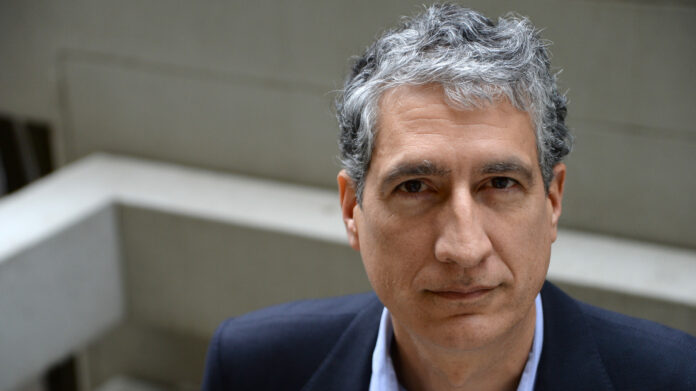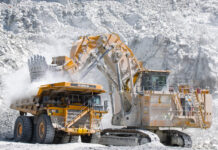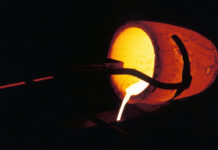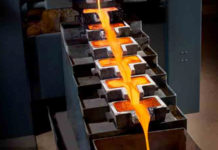
IT’S not often CEOs acknowledge the advances of a rival company but Alberto Calderon has no such qualms. In adopting a swingeing review of AngloGold Ashanti’s mines, he declares a debt to former Newmont Mining CEO Gary Goldberg: “A lot of what I’m doing is what he did at Newmont,” says Calderon, CEO of AngloGold Ashanti since September, 2021. “I actually spoke with him [Goldberg] and he was very helpful in the beginning. I’ve copied a lot of what he did.”
Speaking to Bloomberg News after his appointment in 2013, Goldberg admitted to frequently saying ‘no’ to requests in an effort to “send out a message” on costs. But crucially, he also gave mine management an opportunity to “set things straight” before considering selling non-performing mines. That sounds similar to Calderon’s asset mine review, unveiled in February last year, the aim of which is to have mines dictate their own future.
At the time, AngloGold’s average cash costs were $260 per ounce above its peer group. More than a year into the mine-by-mine review, that number has been reduced to $150/oz. Calderon thinks another $50/oz can be knocked out but possibly no more owing to the preponderance of deeper mining at AngloGold than at mines owned by other companies such as Barrick and, indeed, Newmont itself.
There are other similarities between Calderon and Goldberg. Prior to joining Newmont as chief operating officer in 2011, Goldberg worked at Rio Tinto. Calderon ran several BHP businesses including aluminium, nickel and corporate development. As creatures of the conglomerate, both would recognise the trappings of corporate excess.
In this regard, Calderon makes a connection between AngloGold Ashanti and Anglo American, perhaps the monster of all diversified creations. “I think it goes to the roots of the separation from Anglo, which was never properly thought out,” he says of Anglo, which demerged its gold and uranium division in 2005. Certain structural issues were allowed to “fester”, and this explains why today AngloGold’s latest restructuring required “much more surgery, much deeper than I thought”.
It took Anglo American years to unwind the structure of its former life as an apartheid-era company. During the 1980s and 90s, Anglo was omniscient; there were few mining, industrial, property and even media businesses in which it didn’t either directly or indirectly have influence. Its gold and uranium division in particular was a substantial business. It was as big as Newmont today, with quarterly production of 1.9 million oz, mined by separately incorporated entities such as Southvaal Holdings Ltd, which held shares in Anglo’s listed subsidiary, Vaal Reefs.
Where I see the world is that we will be stuck in the developed world at 5% or 4% inflation for a long time, and then the developing world at 10% or 12%. It’s very good for gold, so I don’t complain – Alberto Calderon
One legacy of this was AngloGold’s sheer human capital, which subsequent CEOs built on rather than cut back. Says Calderon: “You keep your big IT department, you keep your big HR departments.” The company closed or sold mines that no longer made sense to its business case. However, without consciously aiming to do so, the numbers at head office swelled. “You just do the things you were doing,” Calderon says. In one sense, AngloGold never caught up with the vision of its creation. “I think that got exasperating as they were … killing too many birds with one stone.”
Today there are about 280 people in the Johannesburg office, which will remain even though the company has set in motion plans to switch its domicile to London and take a primary listing in New York. But in addition to costs, Calderon is running a parallel, related process, of bringing in new skills. Twenty-five new senior appointments have been made in human capital, procurement and the firm’s information technology units.
The board and executive committee have also been refreshed with a strong Newmont influence, especially at exco level. The company’s CFO is a former Rio Tinto executive while across both structures, some new appointments are women. “Right people, right place with the right accountabilities; being more efficient, find the bottlenecks,” says Calderon.
“Then we get this domicile.”
ALTHOUGH not a surprise, the announcement in May that AngloGold was moving its domicile to London, as well as the primary listing in New York, still came as a shock. But for Calderon, the time was right: “For everything there is a season,” he says, citing Ecclesiastes, or the rock band The Byrds.
Either way, the message seems to have been accepted by shareholders – a $500m tax cost notwithstanding. For that AngloGold gets access to cheaper money. A rerating from the New York listing will also compensate shareholders. Even after a 77% improvement in share price as of mid-June, Calderon thinks AngloGold trades at a discount. “The historic discount is simply enormous,” he says, as much as 60%.
“Is this the best use of $500m?” asked Bank of America. “We think very possibly, yes.” In addition to narrowing the historical value gap against international peers, he says a rerating large enough to offset the transaction costs is “very achievable”, adding – interestingly – that it could also catalyse “potential participation in ongoing gold-sector consolidation”.
Calderon is not a fan of M&A. A joint venture with Gold Fields in Ghana in March and the $370m purchase of Corvus Gold last year were similar types of transactions in that AngloGold bought adjacent mines and properties or cooperated with them, but neither carried hefty premia or invited the noise typical of big-ticket dealmaking. “We don’t need to grow,” he told Miningmx in May. “At three million ounces a year we can keep replacing ounces.” If anything, a primary New York listing could potentially make AngloGold the subject of merger and acquisition activity – which Calderon acknowledges is a risk.
Imponderables aside, the success of the listing will be most strongly dictated by operational performance. “We believe valuation multiples/ratings are driven by large asset quality, consistent operational performance and delivering consistent free cash flow over time,” says Arnold van Graan, an analyst for Nedbank Securities, of AngloGold’s New York listing.
Inflation
Calderon’s appointment at AngloGold was propitious. Since mid-2021, gold has gained 7%. Over that time, however, gold shares have behaved differently: shares in Newmont are down roughly a fifth, Barrick is flat, while AngloGold has doubled in value. Calderon, a former International Monetary Fund economist, believes inflation will remain elevated, supporting gold. The driver is increasing wages. “You have on one side politicians saying, don’t put up interest rates and on the other hand, wages are being increased 5% or 6%. And we are seeing this around the world.
At three million ounces a year we can keep replacing ounces – Alberto Calderon
“How do you have a 2% inflation when the wages have now been indexed for a second and then a third year at 5% or 6%?” Calderon says. “Where I see the world is that we will be stuck in the developed world at 5% or 4% inflation for a long time, and then the developing world at 10% or 12%. It’s very good for gold, so I don’t complain.”
This article first appeared in The Mining Yearbook 2023.











